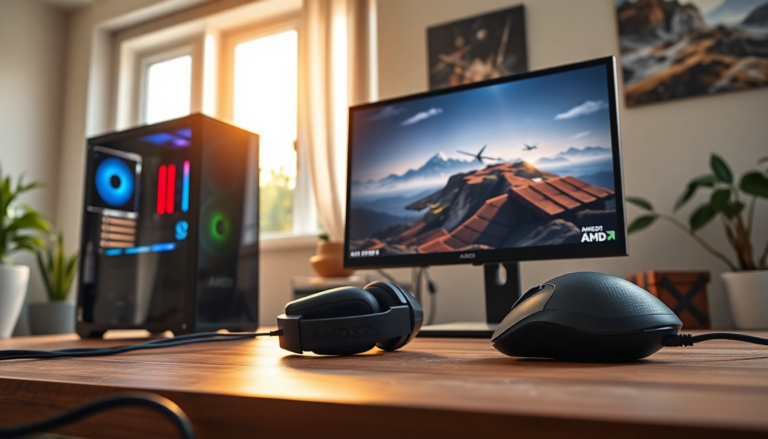Argomenti trattati
When it comes to PC gaming, the debate over how much VRAM is necessary has sparked countless discussions. AMD’s recent launch of the Radeon RX 9060 XT has reignited this conversation, particularly with their chief architect, Frank Azor, boldly stating that most gamers do not need more than 8GB of VRAM. This claim, while controversial, raises questions about gaming trends and hardware demands as we look towards 2025.
Understanding AMD’s perspective on VRAM
At the heart of AMD’s argument lies the idea that a substantial portion of gamers are still playing at 1080p resolution. Azor emphasized that the majority of the most played games globally are esports titles, which generally do not require extensive hardware. In fact, he pointed out that the RX 9060 XT can be equipped with either 8GB or 16GB of VRAM, suggesting that the 8GB version is designed to meet the needs of most players without unnecessary excess. This is a strategic move by AMD to position their more affordable option while justifying the performance capabilities of their hardware.
However, let’s be real—while 8GB of VRAM may suffice for many standard gaming experiences, certain modern titles are pushing the boundaries of what’s required. I remember when I tried playing a graphically intense game with just 8GB. The experience was less than stellar; it felt like I was constantly battling performance issues and frame drops. So, is AMD’s assertion simply a reflection of market demands, or is it a bit of a stretch?
The evolving landscape of gaming requirements
As gaming technology advances, the demands on hardware do too. The RX 9060 XT might cater well to those sticking to 1080p gameplay, but think about the rising popularity of 4K gaming and VR experiences. Demand for higher fidelity and more immersive gameplay is becoming the norm, and with it, the need for more robust hardware specifications. It’s worth noting that some gamers are already investing in hardware that exceeds AMD’s suggested requirements, seeking out GPUs with 12GB or more VRAM. Are they wasting their money, or are they future-proofing their setups?
Moreover, let’s not forget that many of the most played games today, especially in the free-to-play arena—think Counter-Strike 2, Dota 2, or Apex Legends—are less demanding in terms of hardware. These games have massive followings precisely because they can run on a wide array of systems. So, it makes sense that AMD sees a market for their 8GB GPU. But what about the hardcore enthusiasts who want to push their systems to the limit?
Balancing performance and market needs
Azor’s statements are undoubtedly aimed at defending AMD’s market position while catering to a broad audience. Yet, it raises a critical question: as games evolve, will 8GB still be enough? The gaming community is notoriously passionate about performance—just browse through forums and you will find endless debates on the merits of upgrading hardware. Personally, I believe that while AMD’s perspective is rooted in current trends, they may be underestimating the rapid pace at which gaming graphics and requirements are evolving.
In conclusion, the conversation around VRAM isn’t just a technical specification; it’s a reflection of how gamers interact with their experiences. As many know, the gaming landscape is always changing, and what suffices today may not be enough tomorrow. Whether you’re a casual player or a hardcore enthusiast, staying informed about these developments is crucial to making the right choices for your gaming setup.

